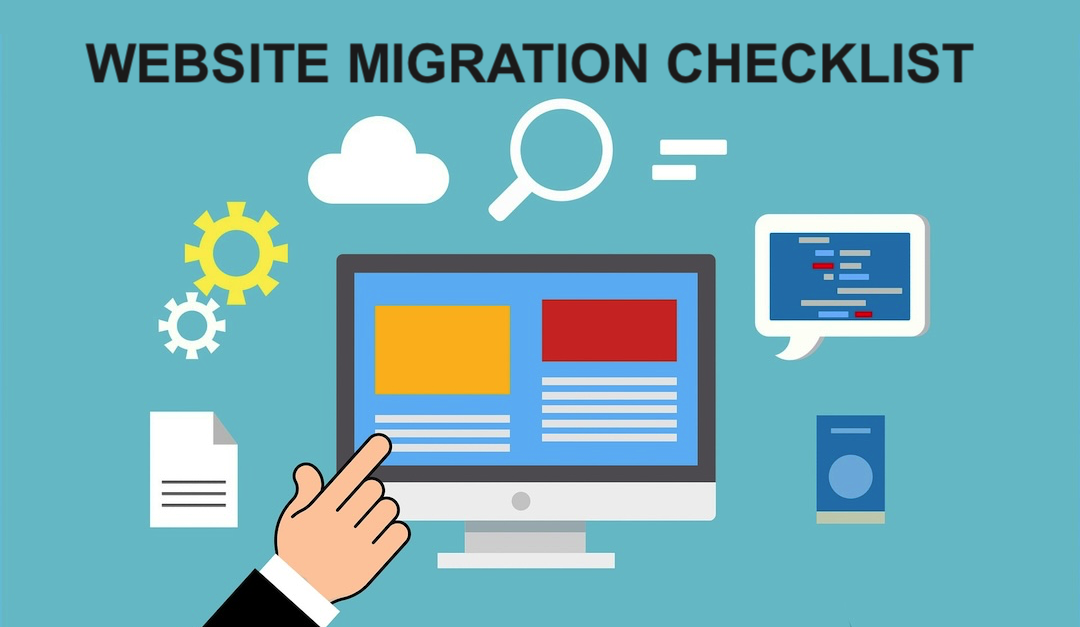
Businesses undergoing a period of change or evolution will likely be faced with the prospect of undertaking a site migration. As websites grow in complexity and size, there may come a time when migrating them is necessary to help companies achieve the next milestone in their growth journey.
While it may sound simple on the surface, a website migration project should not be underestimated; it can be a very complex and multifaceted task. Failing to execute a migration properly can have drastic SEO implications, potentially undoing months - if not years - of hard work undertaken to get a site into a prominent search engine position.
This is why carefully planning each process step helps ensure a smooth, seamless transition to a new platform. This short guide is here to provide step-by-step guidance to help site owners and developers migrate an existing website with as minimal disruption and complication as possible.
What Does a Website Migration Involve?
Migrating a website doesn’t exclusively refer to one thing. In one context, a website migration can involve moving an entire website infrastructure to an entirely new domain, without necessarily changing any of the code.
A site owner could also migrate a website due to changing CMS platforms or web hosting, or if a business is rebranding and thus the domain name needs changing. A migration could also be as simple as upgrading to HTTPS from HTTP, but this is rare given that search engines give favor to sites with proper SSL/TLS accreditation these days.
Any significant change to a website - to its design, content, platform, domain, or structure - that could affect search engine visibility- is considered a site migration. Any web developer will tell you that undertaking such a task cannot be done on a whim, as sites could risk losing hard-earned rankings and traffic, including rich snippets, local pack listings, and backlinks from third-party sites (due to not recognizing a new domain, as an example). A botched migration could also lead to missing content, 404 "not found" errors, or broken webpages, to name but a few problems.
When to Migrate a Site
It’s worth strongly considering a site migration if you’re planning any of the following drastic sitewide changes:
- Restructuring a site: Website migrations will be needed if you’re planning a site restructure, such as by applying HREFLANG to all relevant pages to translate for international audiences and placing relevant pages in language subdomains or subdirectories. Restructuring could also involve consolidating several domains into one major domain or altering the top-level URL structure with permanent 301 redirects applied to older links to make them point to the new ones.
- Redesigning a site: Over time, it’s expected that site owners will wish to give an existing site a makeover. This could be simple cosmetic and UX changes, or be a large-scale project as part of a rebrand or brand refresh. Switching fonts, graphics, or on-page images can make the site easier to navigate and the content better to digest, particularly for sites that rely heavily on visual content like eCommerce, retail, hospitality and hotel websites. However, unsupervised changes may alter the crawlability and indexability of a site. Adding user-friendly interactive elements and plugins may render the site code harder or impossible for Google to index.
- Moving to a new domain or CMS: Switching hosting providers and server locations mandates a site migration plan. This is the most common scenario for migrating a site, which usually involves changing URL paths, moving from subdirectories to subdomains, adapting pages to accommodate Google AMP (Accelerated Mobile Pages) framework or a third-party CDN, or migrating to an entirely new back-end system. Some CMS solutions are less flexible than others, and site owners prefer to host core systems using an interface that they are familiar with, and that offers more functionality options.
If any of the above scenarios are imminent, it’s imperative to create a site migration plan and strategy.
Steps to Execute an Easy and Stress-Free Migration
- Inform customers: When migrating a site, your content will be unavailable for a while, so traffic drops are expected. Therefore, choose an ideal time to execute the migration so that it’s most convenient for your site visitors, bearing in mind the time zones they’re in. Notify your customers ahead of the planned migration date to set their expectations.
- Make fresh backups: Take a complete, up-to-date copy of your website - including site files, CRM data, etc. - that you can always restore easily if something goes wrong. Suggest storing a site in a cloud-based repository and one on a native server, for additional security.
- Set up a staging site and environment: You should ideally implement a test environment with a staging site stored locally. This way, you can test the migration to ensure that any problems or obstacles along the way are minimized or eliminated.
- Set up DNS, CDN, and hosting: Prepare your new hosting environment and set up the DNS information, as well as any CDN information. Be sure to change any email parameters in line with a domain upgrade.
When the migration is underway, it’s important to disable plugins (such as redirect or caching plugins or firewalls) that are active on the site, as they can disrupt the process. - Create lists of redirects: Internally, you should have compiled a list of redirects that you need to create, along with those already in place on your site. Any existing redirects will need to be placed for the new site. Luckily, if you’re changing domains and hosting, only one major redirect is needed to point the old domain to the new domain.
- Review the new site structure: Ahead of time, careful attention should be given to important SEO specifications, including:
- Mobile page setup
- Internal links
- URL structure (including custom URLs)
- Structured data
- Robots.txt
- Canonical tags
- Alt text
- XML sitemap
- HREFLANG
The site’s SEO structure should be verified pre- and post-migration to ensure consistency and that everything is set up correctly as intended, and not reducing your website domain authority (DA). - Migrate site files and database: Migrating sites manually will require you to log into your hosting account and access File Manager or connect to site files using FTP. Locating the root directory of your site is the first step, before uploading the recently backed-up site files. Databases can be accessed via the control panel and migrated to the new server.
- Point domain name to the new host: DNS records connect a domain name to the servers that host a site, including a host’s nameservers. Depending on the web host, some nameservers will be automatically updated, at which point there’s nothing to do. For simply changing a web host, you may follow how to change a web host without downtime article.
However, manual migrations will mandate the logging in of a specific account to update DNS settings. Sites that have used a domain registrar will need to log into the registrar’s native system and update the domain that way. - Run various tests: Benchmarking and testing are crucial to evaluate the success of the migration and the performance of the site. As a starting point, it’s important to run the following tests:
- Page load speed
- SSL certification
- Crawling and indexing errors in Google Search Console
- Broken site links like 404 “not found” errors
- Redirects
- Internal links
- Server response times
- Noindex/index information
It’s also important to test the database and see how it works on the new domain or infrastructure. Functionality tests are also crucial, such as downloadable content, forms, checkouts, webchats, mailing lists, and navigation.
If you have set up a staging environment, these tests can be conducted ahead of time with fixes put in place to mitigate any problems during the live migration. - Monitor analytics and tidy up: Over time, check in Google Search Console for evidence of any errors, warnings, and ranking changes post-migration. Additionally, it’s crucial to review analytics to assess any traffic changes, whether any pages have lost or gained traffic, and what could be attributed to these changes.
Drops could happen due to improperly implemented redirects, slow load times, lost or broken links, and missing metadata. Migrations can cause data to go missing unexpectedly, so it’s important to test and review thoroughly.
Conclusion
With careful planning and testing, companies can execute complex site migrations, with minimal visitor disruption, by following this technical checklist. While there may be additional steps that you need to take to streamline your native migration, the above gives you a solid foundation on which to build and refine your strategy going forward.
Share this post
Leave a comment
All comments are moderated. Spammy and bot submitted comments are deleted. Please submit the comments that are helpful to others, and we'll approve your comments. A comment that includes outbound link will only be approved if the content is relevant to the topic, and has some value to our readers.



Comments (0)
No comment